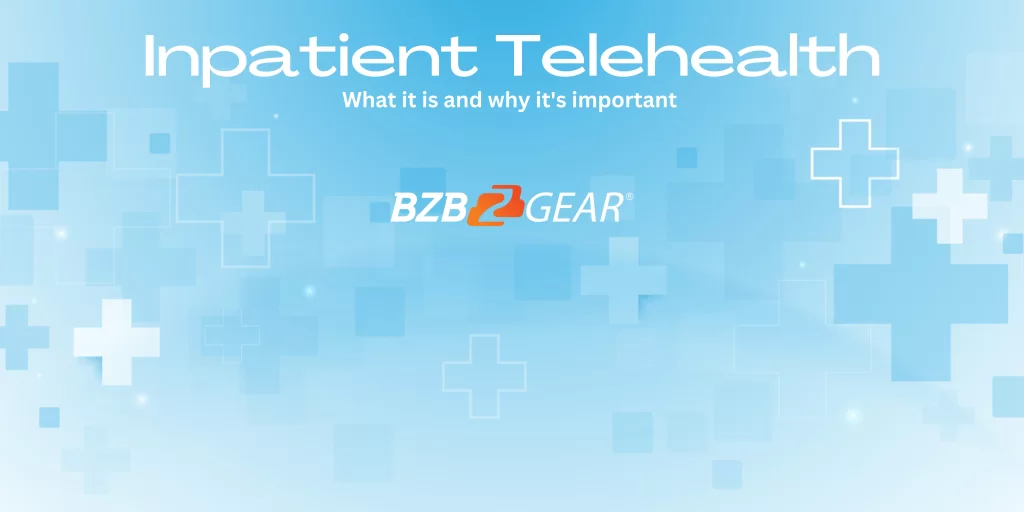Inpatient Virtual Care on the Rise

Virtual care refers to the use of technology to deliver healthcare services remotely. In inpatient settings, virtual care can take many forms, including telemedicine consultations, remote patient monitoring, and virtual rounds. Of course, automated solutions are a significant aspect of this.
What are Telemedicine Consultations?
Telemedicine consultations involve using video conferencing technology to allow healthcare providers to communicate with patients who are unable to leave their hospital rooms. This can be particularly useful for patients who are in isolation or have mobility issues.
A new trend we are seeing in this space is the use of PTZ cameras in patient rooms. The reason for this is that PTZ cameras enable healthcare providers to pan, tilt, and zoom with the camera remotely, using dedicated software. This not only adds flexibility to the workflow but also ensures that the healthcare provider gets an accurate assessment of the patient. However, some patients have expressed concerns about privacy, and it is important to ensure proper safeguards are in place to protect patient information.
Fortunately, there are a variety of solutions for this issue, and we are seeing more developments in the cybersecurity space every year as technology advances.
What is Remote Patient Monitoring?
Remote patient monitoring involves using technology to monitor patients' vital signs and other health indicators from a distance. This can be helpful for patients with chronic conditions or those who are recovering from surgery, as it allows healthcare providers to track their progress without having to be physically present.
AI solutions are heavily present in this area, with a number of organizations developing AI solutions that can assist on-site nurses with keeping track of their assigned patients without having to physically move from room to room unless it is necessary. However, some patients may miss the interpersonal interactions with their assigned nurses and high-quality camera solutions are being developed to address this issue. More specifically, PTZ cameras with high-definition picture quality and auto-tracking capabilities. Why are these features important? Simply put, we need to make virtual reactions feel more natural. Using these cameras, RNs are able to see and be seen clearly while also being able to move and speak naturally, as they would in person. Of course, this doesn’t completely solve this issue, but it does improve the overall quality of communication.
What are Virtual Rounds?
Virtual rounds involve using video conferencing technology to conduct rounds with healthcare teams who are located in different areas of the hospital. This can be useful for hospitals with multiple campuses or for healthcare teams who cannot be physically present on the unit at the same time.
This is where high-quality audio and video solutions take precedence. Solutions for this can range from high-definition conference cameras to video bars or even PTZ cameras. Though, it’s important that features such as wide-angle lenses, auto-framing algorithms, and voice localization in microphones are involved. With larger teams, these features ensure that everyone in the room is able to be seen and heard clearly.
Final Thoughts
While inpatient telehealth tech has the potential to improve access to care, increase efficiency, and improve patient outcomes, it is important to address concerns related to patient privacy and the lack of interpersonal interactions. Solutions such as high-quality cameras and proper safeguards for patient information can help mitigate these concerns. We look forward to seeing the rise of inpatient telehealth solutions and will continue to innovate in the space as well.
8.00 a.m. - 5.00 p.m. (PST)
10.00 a.m. - 3.00 p.m. (PST)
(by appointment only)


